SsangYong Korando vs Suzuki Vitara - Differences and prices compared
Costs and Efficiency:
Price and efficiency are key factors when choosing a car – and this is often where the real differences emerge.
Suzuki Vitara has a to a small extent advantage in terms of price – it starts at 23600 £, while the SsangYong Korando costs 27000 £. That’s a price difference of around 3420 £.
Fuel consumption also shows a difference: Suzuki Vitara manages with 5 L and is therefore clearly more efficient than the SsangYong Korando with 7.50 L. The difference is about 2.50 L per 100 km.
Engine and Performance:
Under the bonnet, it becomes clear which model is tuned for sportiness and which one takes the lead when you hit the accelerator.
When it comes to engine power, the SsangYong Korando has a distinct edge – offering 190 HP compared to 129 HP. That’s roughly 61 HP more horsepower.
In acceleration from 0 to 100 km/h, the SsangYong Korando is somewhat quicker – completing the sprint in 8.40 s, while the Suzuki Vitara takes 9.50 s. That’s about 1.10 s faster.
In terms of top speed, the SsangYong Korando performs minimal better – reaching 191 km/h, while the Suzuki Vitara tops out at 190 km/h. The difference is around 1 km/h.
There’s also a difference in torque: SsangYong Korando pulls noticeable stronger with 360 Nm compared to 235 Nm. That’s about 125 Nm difference.
Space and Everyday Use:
Cabin size, boot volume and payload all play a role in everyday practicality. Here, comfort and flexibility make the difference.
Seats: offers more seating capacity – vs .
In curb weight, Suzuki Vitara is noticeable lighter – 1255 kg compared to 1517 kg. The difference is around 262 kg.
In terms of boot space, the SsangYong Korando offers distinct more room – 551 L compared to 375 L. That’s a difference of about 176 L.
In maximum load capacity, the SsangYong Korando performs to a small extent better – up to 1248 L, which is about 128 L more than the Suzuki Vitara.
When it comes to payload, SsangYong Korando somewhat takes the win – 463 kg compared to 400 kg. That’s a difference of about 63 kg.
Who wins the race?
The SsangYong Korando proves to be wins the duel decisively and therefore becomes our DriveDuel Champion!
SsangYong Korando is the better all-rounder in this comparison.
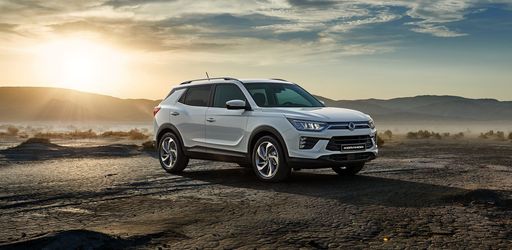 @ SsangYong Motor / KG Mobility
@ SsangYong Motor / KG Mobility
SsangYong Korando
Costs and Consumption
View detailed analysis
Engine and Performance
View detailed analysis
Dimensions and Body
View detailed analysis
SsangYong Korando
The SsangYong Korando pairs bold, modern styling with a surprisingly roomy and practical cabin, so it looks confident at the lights and handles the daily grind without fuss. It swaps flashy badges for honest value, offering a composed ride, useful equipment and wallet-friendly running that make it an appealing pick for buyers who'd rather spend on weekends than on extravagant finance packages.
details @ SsangYong Motor / KG Mobility
@ SsangYong Motor / KG Mobility
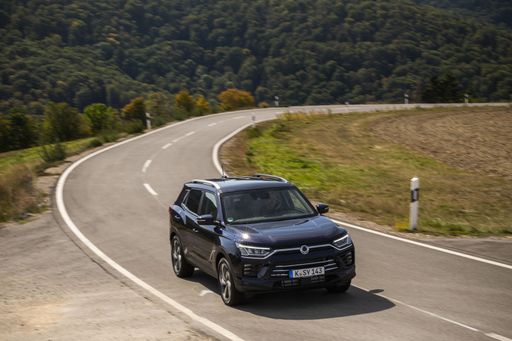 @ SsangYong Motor / KG Mobility
@ SsangYong Motor / KG Mobility
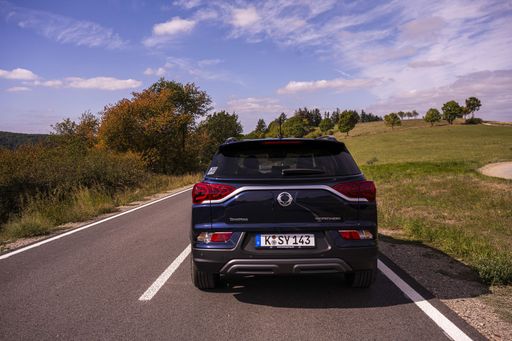 @ SsangYong Motor / KG Mobility
@ SsangYong Motor / KG Mobility
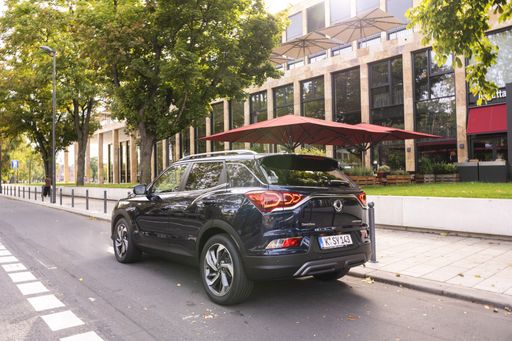 @ SsangYong Motor / KG Mobility
@ SsangYong Motor / KG Mobility
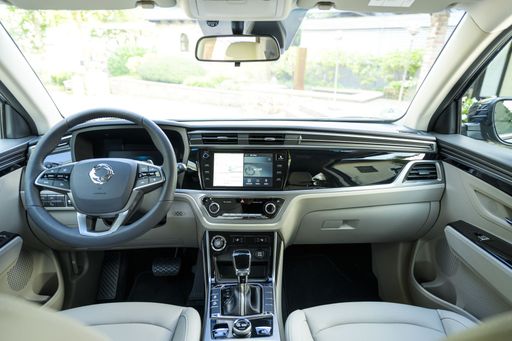 @ SsangYong Motor / KG Mobility
@ SsangYong Motor / KG Mobility
Suzuki Vitara
The Vitara is a city-smart SUV with a cheeky streak of off-road promise, perfect for drivers who want practicality without pretense. It’s honest, easy to live with and surprisingly likeable, a sensible companion for everyday adventures and weekend escapes.
details @ Suzuki Motor Corporation
@ Suzuki Motor Corporation
 @ Suzuki Motor Corporation
@ Suzuki Motor Corporation
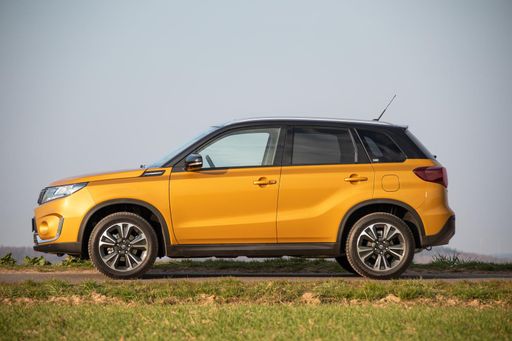 @ Suzuki Motor Corporation
@ Suzuki Motor Corporation
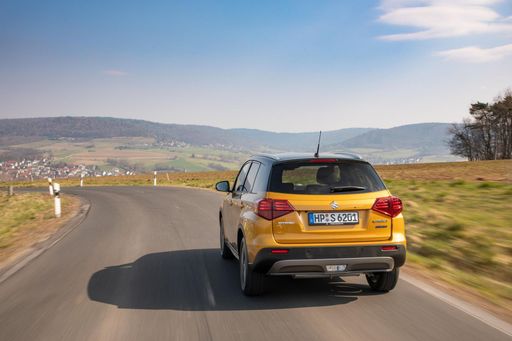 @ Suzuki Motor Corporation
@ Suzuki Motor Corporation
 @ Suzuki Motor Corporation
@ Suzuki Motor Corporation
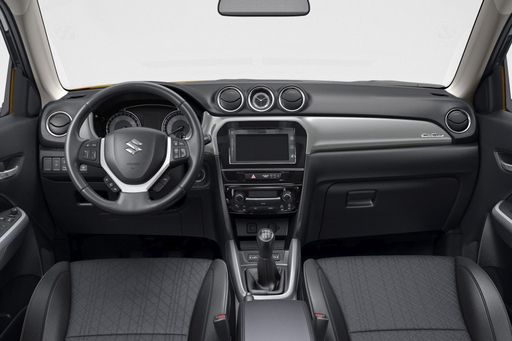 @ Suzuki Motor Corporation
@ Suzuki Motor Corporation
 @ SsangYong Motor / KG Mobility
@ SsangYong Motor / KG Mobility
|
 @ Suzuki Motor Corporation
@ Suzuki Motor Corporation
|
|
|
|
Costs and Consumption |
|
|---|---|
|
Price
27000 - 42000 £
|
Price
23600 - 30900 £
|
|
Consumption L/100km
7.5 - 8.6 L
|
Consumption L/100km
5 - 5.9 L
|
|
Consumption kWh/100km
16.80 kWh
|
Consumption kWh/100km
-
|
|
Electric Range
339 km
|
Electric Range
-
|
|
Battery Capacity
-
|
Battery Capacity
-
|
|
co2
0 - 197 g/km
|
co2
113 - 138 g/km
|
|
Fuel tank capacity
50 L
|
Fuel tank capacity
47 L
|
Dimensions and Body |
|
|---|---|
|
Body Type
SUV
|
Body Type
SUV
|
|
Seats
5
|
Seats
5
|
|
Doors
5
|
Doors
5
|
|
Curb weight
1517 - 1840 kg
|
Curb weight
1255 - 1395 kg
|
|
Trunk capacity
551 L
|
Trunk capacity
289 - 375 L
|
|
Length
4450 - 4465 mm
|
Length
4185 mm
|
|
Width
1870 mm
|
Width
1775 mm
|
|
Height
1620 - 1645 mm
|
Height
1595 mm
|
|
Max trunk capacity
1248 L
|
Max trunk capacity
1046 - 1120 L
|
|
Payload
410 - 463 kg
|
Payload
375 - 400 kg
|
Engine and Performance |
|
|---|---|
|
Engine Type
Petrol, Electric
|
Engine Type
Petrol MHEV, Full Hybrid
|
|
Transmission
Manuel, Automatic
|
Transmission
Manuel, Automatic
|
|
Transmission Detail
Manual Gearbox, Automatic Gearbox, Reduction Gearbox
|
Transmission Detail
Manual Gearbox, Automated Manual, Automatic Gearbox
|
|
Drive Type
Front-Wheel Drive, All-Wheel Drive
|
Drive Type
Front-Wheel Drive, All-Wheel Drive
|
|
Power HP
163 - 190 HP
|
Power HP
110 - 129 HP
|
|
Acceleration 0-100km/h
8.40 s
|
Acceleration 0-100km/h
9.5 - 12.7 s
|
|
Max Speed
156 - 191 km/h
|
Max Speed
180 - 190 km/h
|
|
Torque
260 - 360 Nm
|
Torque
235 Nm
|
|
Number of Cylinders
4
|
Number of Cylinders
4
|
|
Power kW
120 - 140 kW
|
Power kW
81 - 95 kW
|
|
Engine capacity
1497 cm3
|
Engine capacity
1373 - 1462 cm3
|
General |
|
|---|---|
|
Model Year
2021 - 2023
|
Model Year
2024 - 2025
|
|
CO2 Efficiency Class
F, G, A
|
CO2 Efficiency Class
D, C, E
|
|
Brand
SsangYong
|
Brand
Suzuki
|
What drive types are available for the SsangYong Korando?
Available configurations include Front-Wheel Drive or All-Wheel Drive.
The prices and data displayed are estimates based on German list prices and may vary by country. This information is not legally binding.
